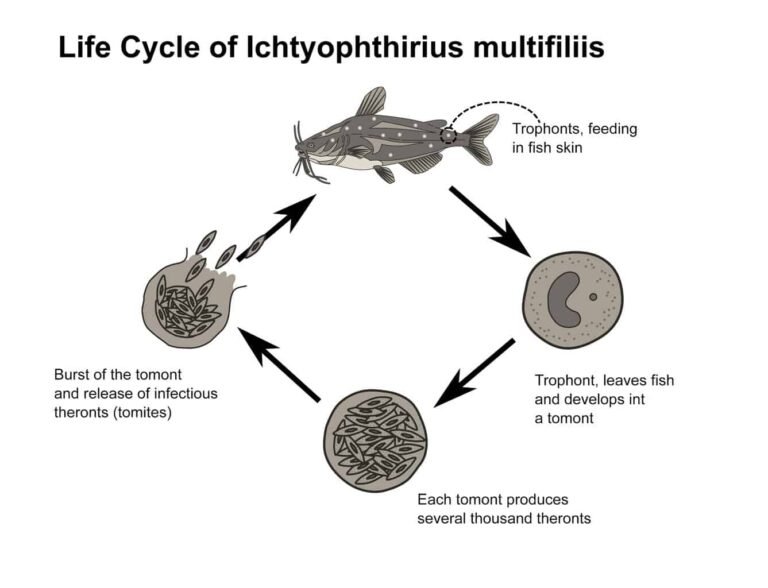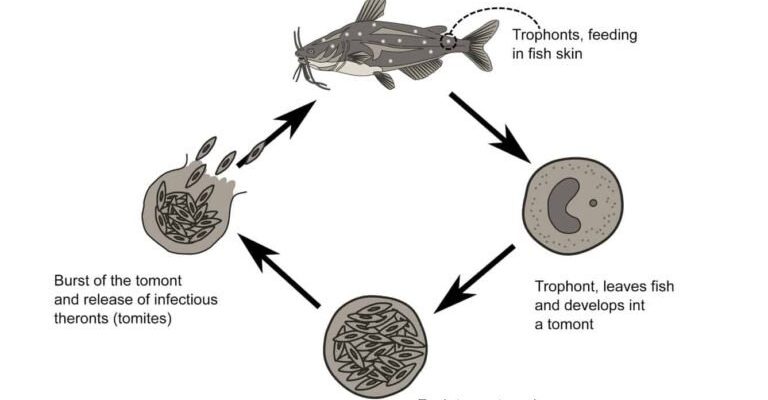
So, what exactly is an oligochaete? These worms belong to the class Oligochaeta, and they’re mostly known for their segments and bristles, or *setae*, that help them navigate through their muddy homes. They come in a variety of species, each contributing to their ecosystems in different ways. Let’s take a closer look at their life cycle, the stages they go through, and some interesting behaviors that make them unique.
Understanding the Life Cycle of Freshwater Oligochaetes
The life cycle of the freshwater oligochaete is fascinating and follows a specific sequence that can generally be broken down into several stages: egg, juvenile, and adult. Each stage has its unique characteristics, contributing to their growth and survival in their aquatic environments.
1. Egg Stage
The life of an oligochaete begins as a zygote, typically laid in protective cocoons. These cocoons, produced during mating, can hold one to several eggs, depending on the species. The parent worms often deposit these eggs in damp, sheltered areas of the substrate. This choice is crucial for the survival of the embryos, as it protects them from predators and environmental elements.
The eggs take about two weeks to develop, depending on the species and environmental conditions. Warm temperatures can speed up the process, while cooler waters can slow it down. It’s a bit like baking cookies—you need just the right amount of heat for them to rise perfectly. After the incubation period, tiny juvenile worms emerge, ready to begin their journey through life.
2. Juvenile Stage
Once the eggs hatch, the tiny oligochaetes are usually only a fraction of an inch long, resembling miniature versions of their adult selves. They begin their life in the same environment as their parents, slowly venturing out to explore their surroundings. This juvenile stage is essential for growth and learning.
During this period, they feed on organic matter, breaking down decaying plant material and microorganisms. It’s kind of like starting school—everything is new, and there’s so much to learn! As they grow, they undergo a process called *metamerism*, where their bodies become more segmented, and they develop more prominent bristles. This adaptation helps them move effectively through the sediment in their freshwater habitats.
3. Adult Stage
After several weeks to months, the oligochaetes reach adulthood. At this stage, they can reproduce and begin the cycle anew. Adults can grow between 1 to 12 inches long, depending on the species, and they exhibit various behaviors that are quite intriguing.
Adult oligochaetes are hermaphroditic, meaning each worm has both male and female reproductive organs. When it comes time to mate, two oligochaetes will align their bodies and exchange sperm. After mating, they produce cocoons to lay their eggs, and the life cycle continues. This reproductive strategy is beneficial, as it maximizes their chances of finding a mate in their often-dispersed populations.
Behavioral Traits of Freshwater Oligochaetes
Now that we’ve covered their life cycle, let’s talk about some behaviors that make oligochaetes particularly interesting. These behaviors help them adapt and thrive in their watery worlds.
Feeding Habits
Oligochaetes are *detritivores*, which means they primarily feed on decomposing organic material. They play a crucial role in nutrient cycling within freshwater ecosystems. As they consume this organic detritus, they help break it down, turning it into nutrients that can be used by other organisms. It’s like they’re nature’s recyclers!
They have a unique way of feeding: they take in sediment, extract the nutrients they need, and then expel the leftover material. This process not only nourishes them but also aerates the sediment, providing a more hospitable environment for other aquatic life.
Burrowing Behavior
One of the most notable behaviors of oligochaetes is their burrowing ability. With their segmented bodies, they wiggle through the substrate, creating tunnels. This burrowing behavior is not just for fun; it allows them to find food, avoid predators, and even reproduce.
These tunnels also benefit the surrounding ecosystem by promoting soil aeration and water filtration. The next time you think about worms in the ground or water, remember how busy they are working behind the scenes to keep everything running smoothly!
Response to Environmental Changes
Oligochaetes are surprisingly resilient creatures, able to adapt to various environmental changes. For example, they can tolerate low oxygen levels in muddy waters—a fact that helps them thrive in environments where other organisms might struggle.
You might be wondering how they do this. Their bodies can absorb oxygen directly through their skin, allowing them to survive in less-than-ideal conditions. This adaptability is an invaluable trait, ensuring their continued presence in diverse aquatic habitats.
The Importance of Oligochaetes in Ecosystems
Understanding the life cycle and behavior of freshwater oligochaetes highlights their importance within ecosystems. These little worms are more than just wriggly inhabitants; they serve critical roles in maintaining ecological balance.
Nutrient Cycling
Without oligochaetes, our freshwater ecosystems would struggle. They help break down organic matter, turning it into nutrients that other organisms can absorb. This process is essential for plant growth, which in turn supports fish and other wildlife.
Imagine a garden without worms: it wouldn’t be able to thrive! Oligochaetes play a similar role in our aquatic gardens, ensuring everything from algae to larger fish has the nutrients they need to survive.
Food Source for Other Species
Oligochaetes also serve as a valuable food source for many aquatic animals, including fish, amphibians, and birds. Their abundance makes them an important part of the food web, supporting the survival of many species.
Without them, many fish populations would decline, and that could upset the entire ecosystem. Just like how bees are crucial for pollination, oligochaetes are vital for the health of freshwater environments.
The life cycle of the freshwater oligochaete is an incredible journey, from tiny eggs to adult worms that contribute significantly to their environments. Their unique behaviors, like feeding on detritus and burrowing through sediment, make them essential players in the health of aquatic ecosystems.
Understanding these little creatures helps us appreciate the delicate balance of life in freshwater habitats. The next time you spot a worm in a stream or pond, take a moment to consider its life and the vital role it plays beneath the surface. Who knew that something so small could have such a big impact?

